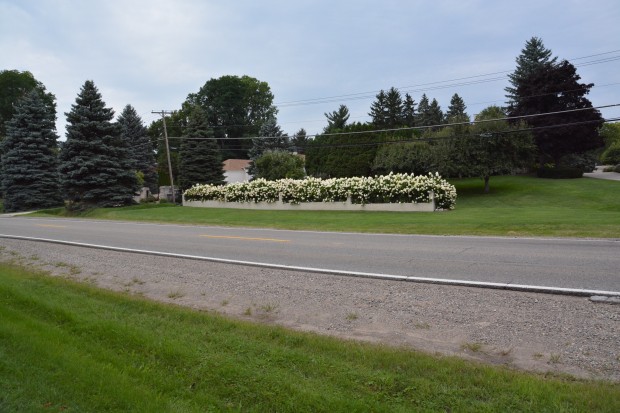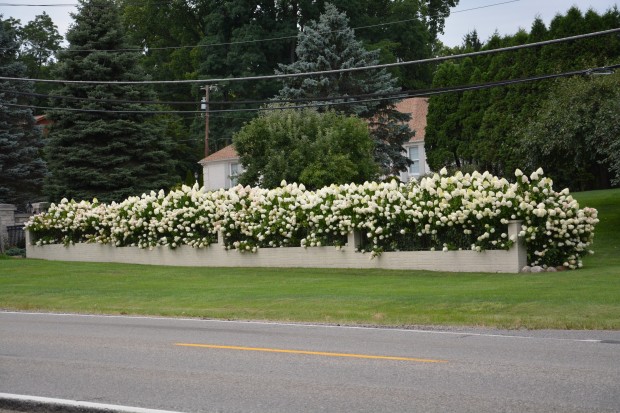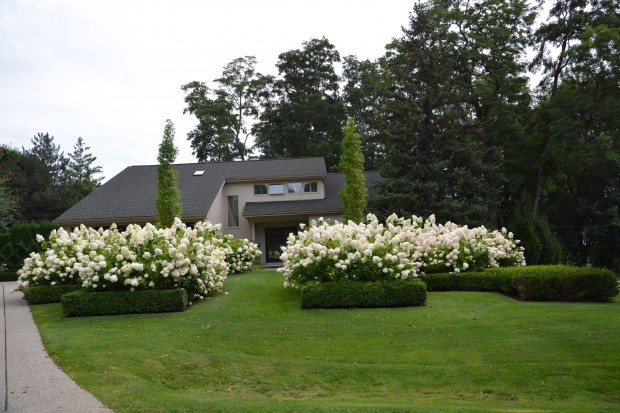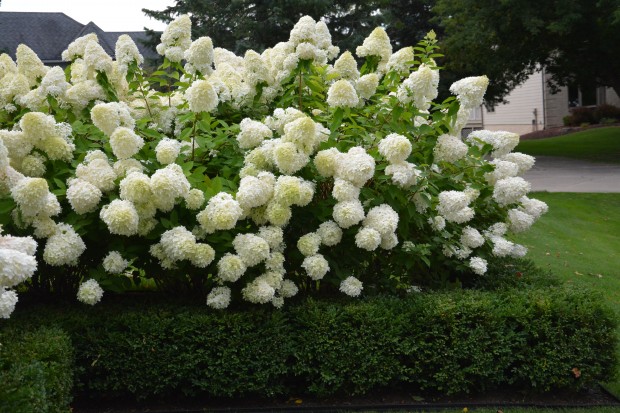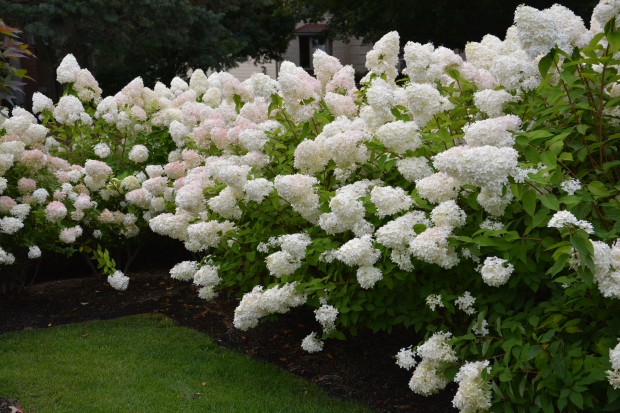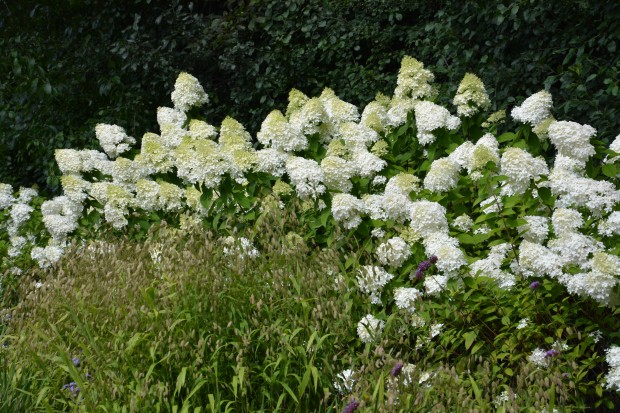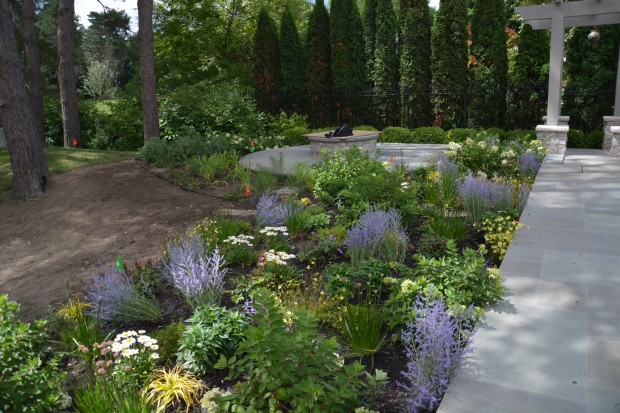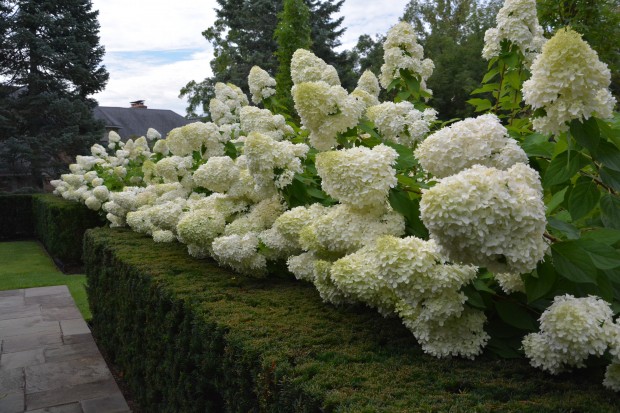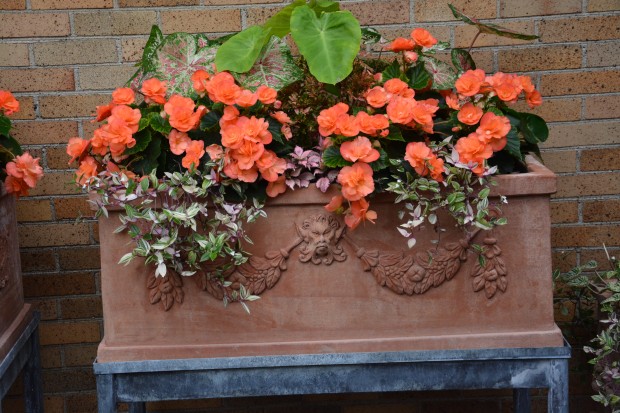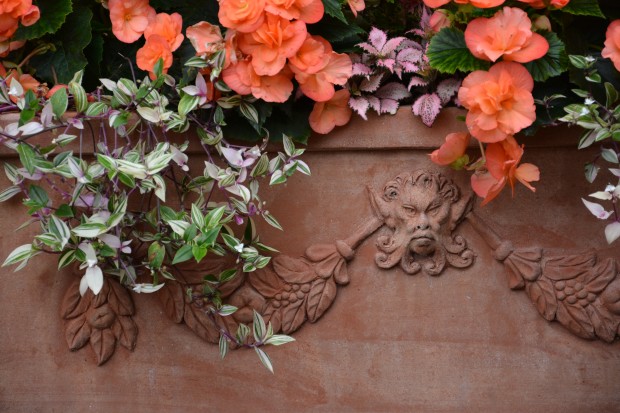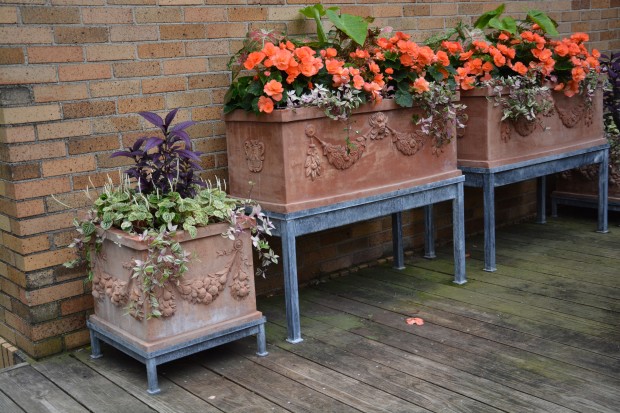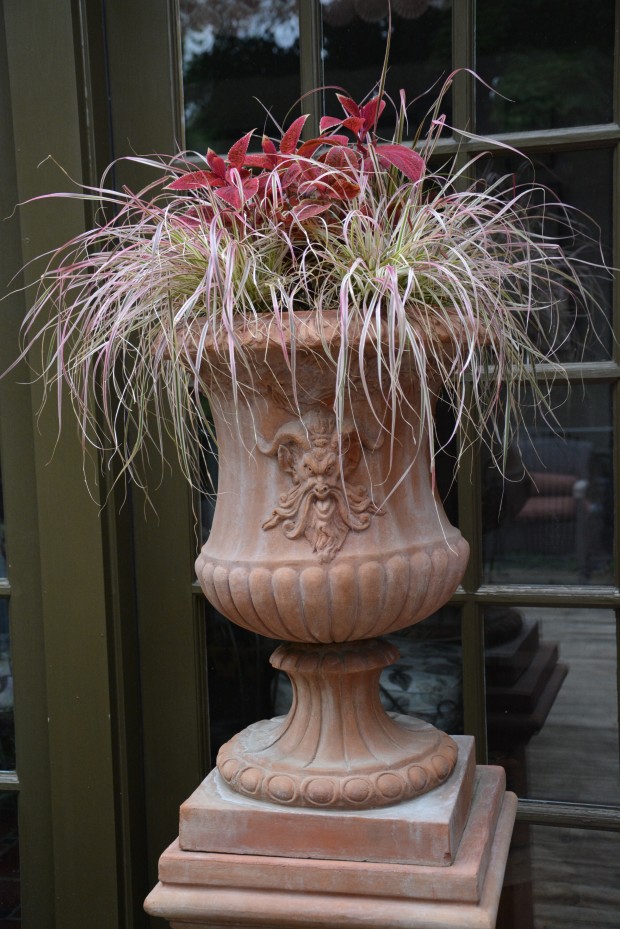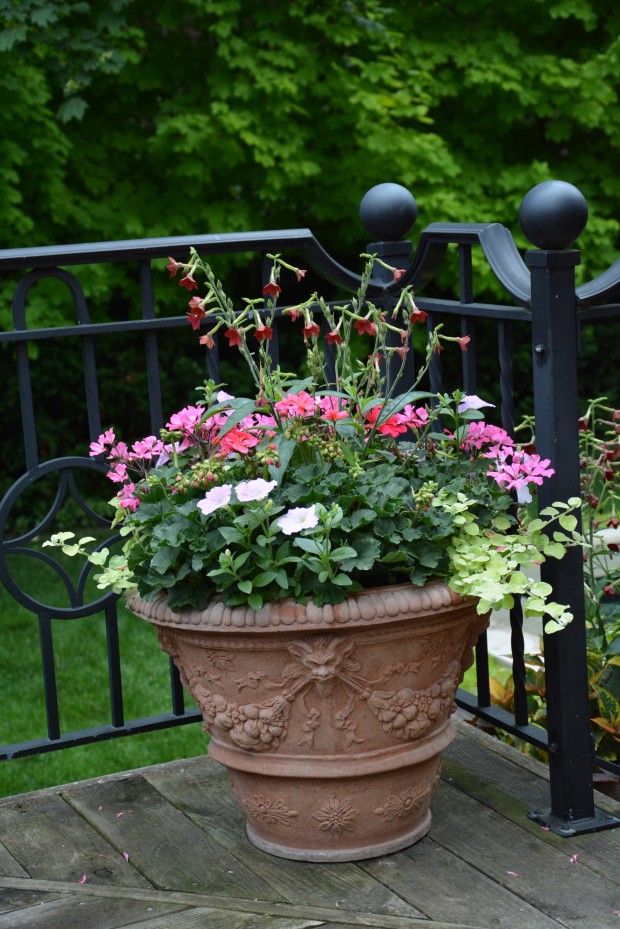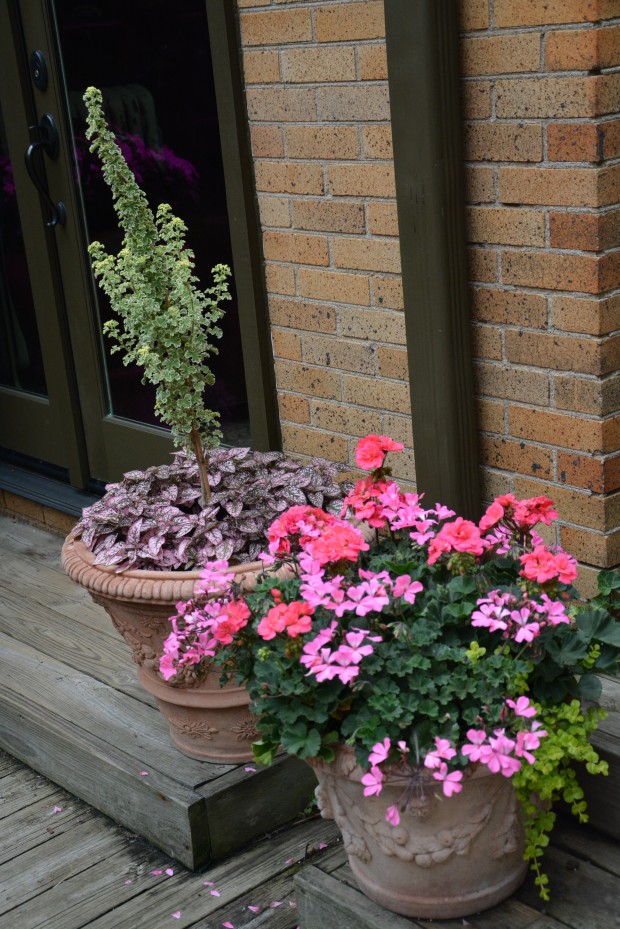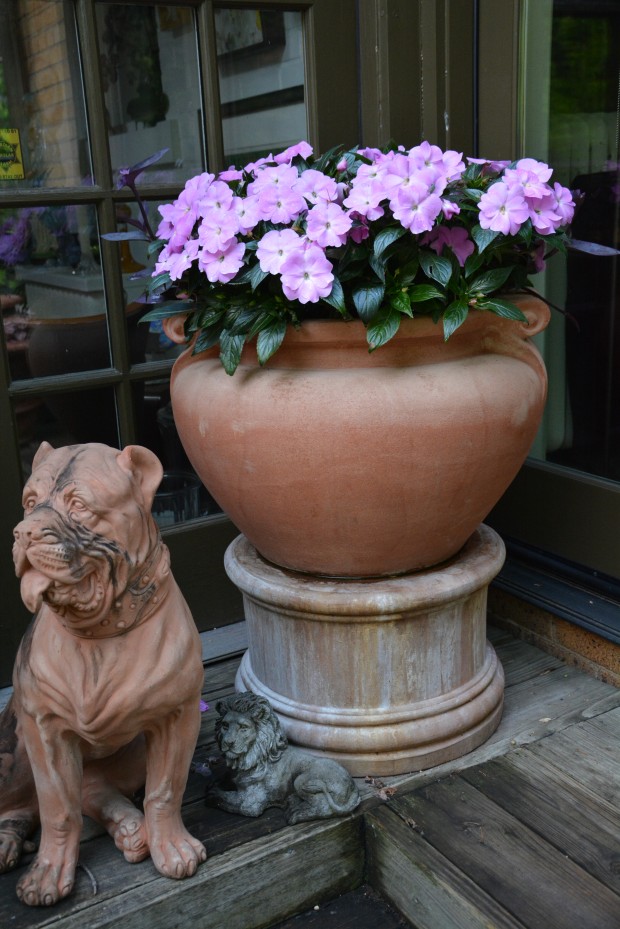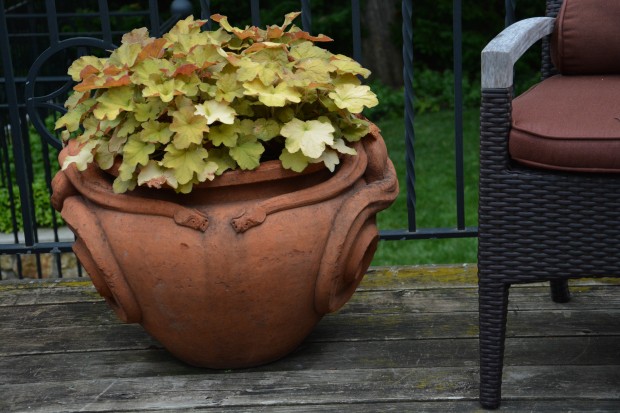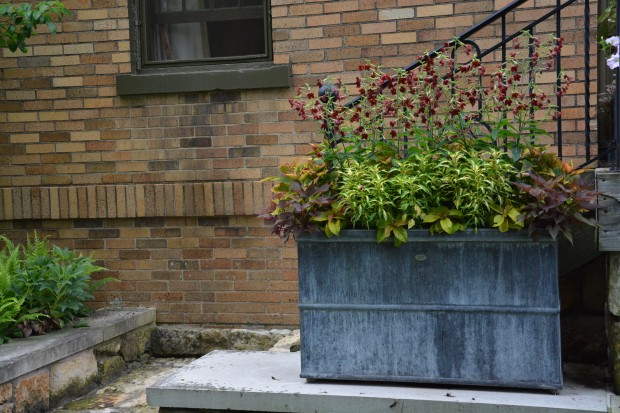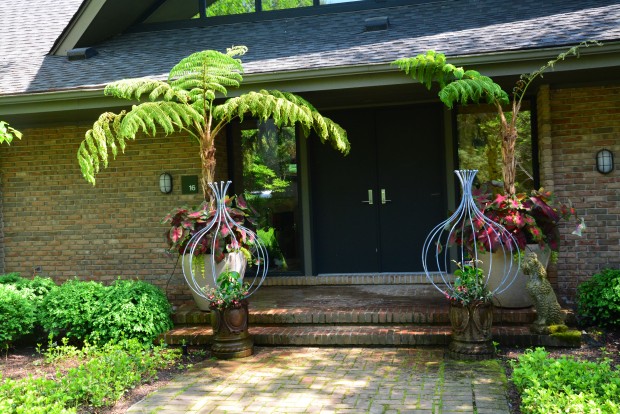 I did my first summer container planting today. The fact that it was Memorial Day is appropriate. Michigan is not reliably frost free until the end of May. Just last week we had temps in the 30’s on 2 nights-this is typical. I hung back from planting until now. Seasonal plants, which are invariably tropical plants, hate cold soil, and just above freezing air temperatures. A too early planting can set them back for weeks, if not longer. The caladiums under planting these old tree ferns cannot take any cold whatsoever. I hope the nights will be kind to them. The tree fern on the right had to be cut back to the trunk, following an infestation of mealy bugs this winter. The mealy bugs went in the trash with the leaves. It will leaf out again in no time.
I did my first summer container planting today. The fact that it was Memorial Day is appropriate. Michigan is not reliably frost free until the end of May. Just last week we had temps in the 30’s on 2 nights-this is typical. I hung back from planting until now. Seasonal plants, which are invariably tropical plants, hate cold soil, and just above freezing air temperatures. A too early planting can set them back for weeks, if not longer. The caladiums under planting these old tree ferns cannot take any cold whatsoever. I hope the nights will be kind to them. The tree fern on the right had to be cut back to the trunk, following an infestation of mealy bugs this winter. The mealy bugs went in the trash with the leaves. It will leaf out again in no time.
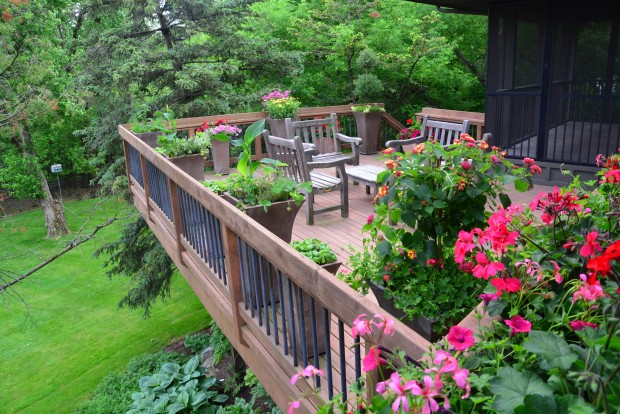 I have been planting containers for this client for the better part of 20 years. She has 2 large decks connected by a deck/causeway, that are one story off the ground. They are like tree houses-for adults. This is where they spend time outdoors in the summer. Three pots have nothing but basil. 2 pots, planted with yellow punch cannas, are under planted with thyme. Another pot features a cherry tomato, chives, and more thyme. The remainder of the pots, and the boxes are planted with flowers.
I have been planting containers for this client for the better part of 20 years. She has 2 large decks connected by a deck/causeway, that are one story off the ground. They are like tree houses-for adults. This is where they spend time outdoors in the summer. Three pots have nothing but basil. 2 pots, planted with yellow punch cannas, are under planted with thyme. Another pot features a cherry tomato, chives, and more thyme. The remainder of the pots, and the boxes are planted with flowers.
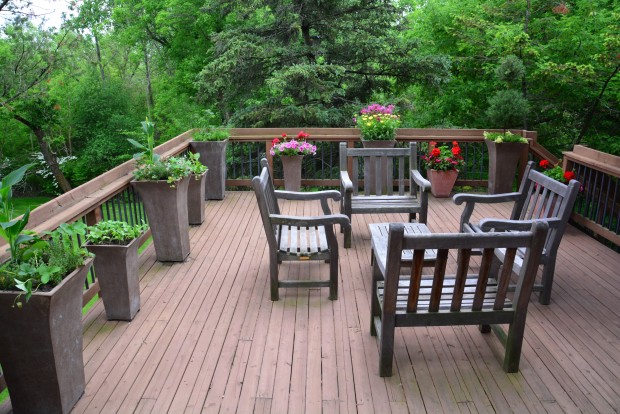 Every year we do the flowers differently. Last year, the colors were pastel, white, and silver. This year, she asked for lots of color.The pot in the center back of this deck has carmine sonata cosmos. The centers of these cosmos are yellow-thus the yellow boston daisies in the foreground. Cherry geraniums and magenta sunpatiens fill the 2 pots on the right.
Every year we do the flowers differently. Last year, the colors were pastel, white, and silver. This year, she asked for lots of color.The pot in the center back of this deck has carmine sonata cosmos. The centers of these cosmos are yellow-thus the yellow boston daisies in the foreground. Cherry geraniums and magenta sunpatiens fill the 2 pots on the right.
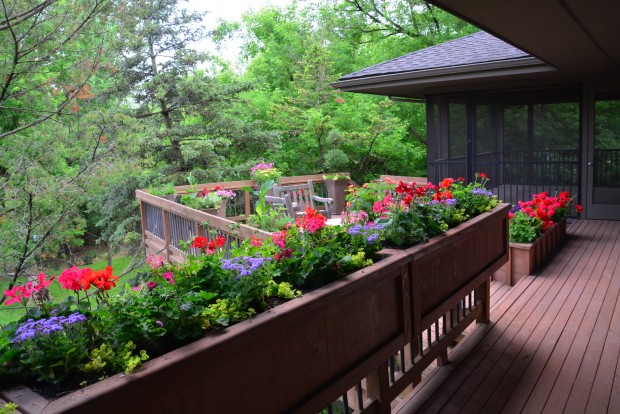 The thought of geraniums may make you sleepy, but they come in an extraordinarily brilliant range of colors. The big headed zonal geraniums are beautiful, but challenging for some to grow. They like judicious watering, and lots of food. I planted the deck boxes with an assortment of Caliente geraniums. They are so easy to grow, and bloom profusely way into the fall, with not so specialized care.The outside row of plants includes two shades of ivy geraniums-they will cascade in partnership with vista fuchsia petunias. On the inside/house side, the geraniums are kept company with artist ageratum and gold marjoram.
The thought of geraniums may make you sleepy, but they come in an extraordinarily brilliant range of colors. The big headed zonal geraniums are beautiful, but challenging for some to grow. They like judicious watering, and lots of food. I planted the deck boxes with an assortment of Caliente geraniums. They are so easy to grow, and bloom profusely way into the fall, with not so specialized care.The outside row of plants includes two shades of ivy geraniums-they will cascade in partnership with vista fuchsia petunias. On the inside/house side, the geraniums are kept company with artist ageratum and gold marjoram.
 This deck box is stuffed with zonal geraniums in cherry and red, heliotrope, hot pink gerbera daisies, gold marjoram and vista fuchsia petunias. The color and the textures are strong. This is a very tropical experience of the garden that banishes any thoughts of the Michigan winter. I am fortunate to have the opportunity to garden in a number of different ways, every season of the year. The container plantings can be changed up every year. It is a pleasure to have one part of the garden that can be interpreted differently every season. A fresh look is almost always a good look.
This deck box is stuffed with zonal geraniums in cherry and red, heliotrope, hot pink gerbera daisies, gold marjoram and vista fuchsia petunias. The color and the textures are strong. This is a very tropical experience of the garden that banishes any thoughts of the Michigan winter. I am fortunate to have the opportunity to garden in a number of different ways, every season of the year. The container plantings can be changed up every year. It is a pleasure to have one part of the garden that can be interpreted differently every season. A fresh look is almost always a good look.
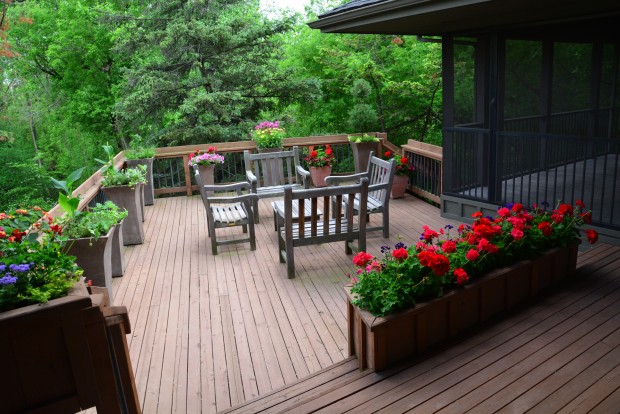 This deck has a small seating area, in the center of the space. The pots describe the boundaries of the deck. This deck can be seen from inside, via a series of sliding glass doors. It took the entire day for all of us to haul the mulch, soil and plants to this upper deck-down into the back yard via large stone slabs, and up onto the deck via a flight of wood steps-but the result is a garden in the sky. All of the pots have the canopies of mature trees as a background.
This deck has a small seating area, in the center of the space. The pots describe the boundaries of the deck. This deck can be seen from inside, via a series of sliding glass doors. It took the entire day for all of us to haul the mulch, soil and plants to this upper deck-down into the back yard via large stone slabs, and up onto the deck via a flight of wood steps-but the result is a garden in the sky. All of the pots have the canopies of mature trees as a background.
 Some years ago we had wood boxes made that hang off the railings of the deck. This means the connector causeway is available for walking, and the boxes drain off the deck. All the kids and grand kids have plenty of places and spaces to be. But there are summer flowers, everywhere.
Some years ago we had wood boxes made that hang off the railings of the deck. This means the connector causeway is available for walking, and the boxes drain off the deck. All the kids and grand kids have plenty of places and spaces to be. But there are summer flowers, everywhere.
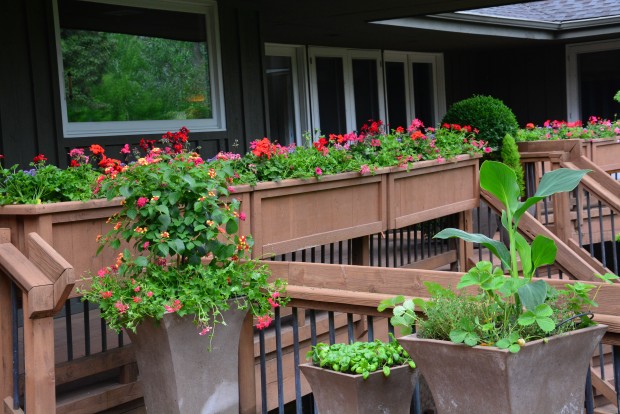 A new raspberry, yellow and orange lantana standard is the centerpiece of the pot on the left. It is under planting with a hot coral pink mini cascade ivy geranium. My client tells me that ivy geraniums, and zonal geraniums are very popular in window boxes in Europe, as they are reputed to repel flies and mosquitoes. Really. They will have a chance to test this theory out this summer. The pot on the right? yellow punch canna, thyme, and ever bearing strawberries.
A new raspberry, yellow and orange lantana standard is the centerpiece of the pot on the left. It is under planting with a hot coral pink mini cascade ivy geranium. My client tells me that ivy geraniums, and zonal geraniums are very popular in window boxes in Europe, as they are reputed to repel flies and mosquitoes. Really. They will have a chance to test this theory out this summer. The pot on the right? yellow punch canna, thyme, and ever bearing strawberries.
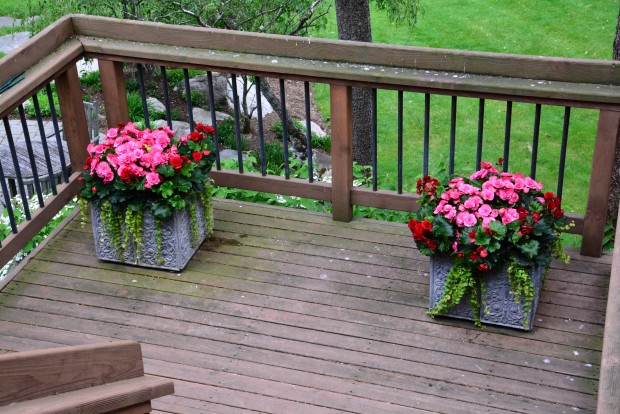 A pair of beautiful lead square boxes have been planted with lots of different plants over the years. This is a partial shade location. The rose pink solenia begonias, wreathed in red solenia begonias, will thrive here.
A pair of beautiful lead square boxes have been planted with lots of different plants over the years. This is a partial shade location. The rose pink solenia begonias, wreathed in red solenia begonias, will thrive here.
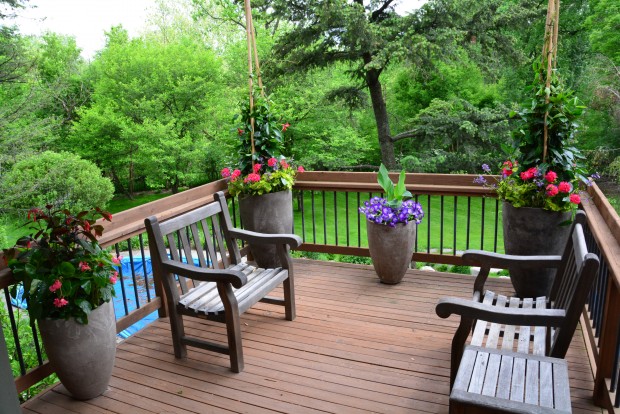 The master bedroom deck is not large, but it is important. My client opens her eyes to this deck every morning, via a floor to ceiling window. This year, red mandevilleas are encircled by Persian Queen geraniums. Scaevola interrupts the parade of the geraniums. An orange punch canna in the center pot will be offset by an amazing selection of dark purple petunias with a white eye. This variety of petunia is incredibly fragrant-so great for a terrace off a bedroom. At the far left, a Gartenmeister fuchsia is under planted with a tall hot pink angel wing begonia. This was a great day-beautiful weather, beautiful material, and treasured clients.
The master bedroom deck is not large, but it is important. My client opens her eyes to this deck every morning, via a floor to ceiling window. This year, red mandevilleas are encircled by Persian Queen geraniums. Scaevola interrupts the parade of the geraniums. An orange punch canna in the center pot will be offset by an amazing selection of dark purple petunias with a white eye. This variety of petunia is incredibly fragrant-so great for a terrace off a bedroom. At the far left, a Gartenmeister fuchsia is under planted with a tall hot pink angel wing begonia. This was a great day-beautiful weather, beautiful material, and treasured clients.
